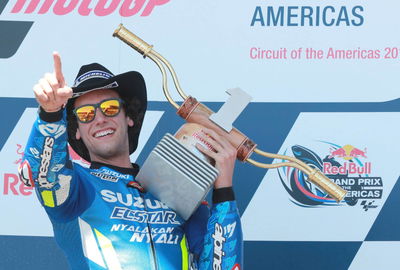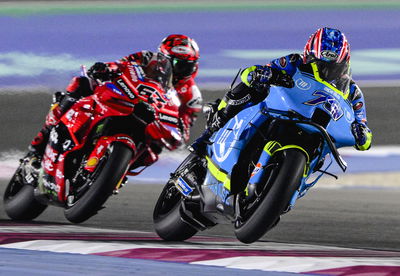Yamaha ‘didn’t feel strongly about protest’, MSMA hopes
Yamaha ‘didn’t feel strongly’ enough about Ducati’s swingarm device to join MotoGP’s four other factories in protesting the FIM’s decision to the Court of the Appeals, according to Managing Director Lin Jarvis.
As Honda, Suzuki, KTM and Aprilia united in the wake of the season opener in Qatar, Yamaha’s involvement was notable by its absence, with factory personnel opting out of the verbal exchanges in the weeks that followed.
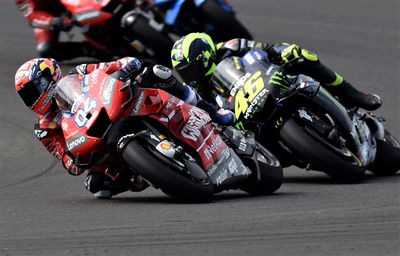
Yamaha ‘didn’t feel strongly’ enough about Ducati’s swingarm device to join MotoGP’s four other factories in protesting the FIM’s decision to the Court of the Appeals, according to Managing Director Lin Jarvis.
As Honda, Suzuki, KTM and Aprilia united in the wake of the season opener in Qatar, Yamaha’s involvement was notable by its absence, with factory personnel opting out of the verbal exchanges in the weeks that followed.
The decision stemmed from the factory’s belief that this kind of issue should have been resolved within the Motorcycle Sports Manufacturers’ Association (MSMA), an idea echoed by Ducati’s technical chief Gigi Dall’Igna.
Jarvis also said Yamaha was aware Ducati’s device was inspired by its own swingarm attachment, that was debuted at last November’s season finale in Valencia with the idea of deflecting rain from the rear tyre, which was another factor.
With Dall’Igna revealing the device influenced the rear tyre temperature over race distance to the extent of cooling it by seven degrees, Jarvis didn’t rule out the Iwata factory developing its own component for future races. “We’ll certainly look into it without doubt,” he said.
‘Making a protest has consequences…’
Explaining Yamaha’s decision not to protest, Jarvis told Crash.net, “Making a protest is quite a bold move to do and it has consequences as well. It has public consequences because you make a statement, you make a move, you pay your protest fee and you run your course.
“That was their decision to go down that route and it was clear there were several factories on board that were willing to take up this claim and felt strongly about this winglet on the Ducati. We didn’t feel strongly like they did about the situation.
“Of course prior to that we had used a similar device on the swingarm in rain conditions. So there are sometimes when you feel very personally engaged, involved and convinced by something and you join.
“There are other times when you don’t and you say, ‘Do what you want to do.’ We respect the rules and we respect the outcome of this discussion. I think it’s a process that probably in the past, and hopefully in the future will be discussed within the MSMA, in the group, as opposed to almost a public domain.
“So there are different ways to solve different problems and we chose to not go down that route.”
The question is why it was not raised in the MSMA…
While certain members of the four protesting factories have indicated their actions were, in part, to express discontent at Dall’Igna and Ducati’s insistence on repeatedly pushing the boundaries of the technical regulations, Jarvis described the actions as “bold and aggressive.”
He felt the issue should have been raised in the MSMA, where each of the six MotoGP factories have a chance to voice their particular concern, before going public with a protest. “We should be able to find a consensus for the … way to do things,” he said.
“The question is why was it not raised in the MSMA,” said Jarvis. “If it had been raised in the MSMA and a harmonious agreement had not been found, OK, you may then take it to another level. We have not actually tried to resolve it in the MSMA first.
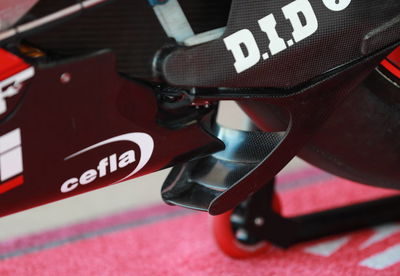
The Ducati swingarm device that led to the fallout after the Grand Prix of Qatar
“It’s a very bold and aggressive move to do at the first grand prix. The consequences are quite strong as well because had they won the case - and I don’t want to judge whether it was right or wrong, because that’s the job of the FIM – it has consequences for the result of the race, for the sport, as the winner may have been excluded and may have had his points taken away.
“I don’t think we need to go down that aggressive route in general here. We should be able to find a consensus for the right and wrong way to do things.
“Maybe one of the positive things coming out of it is it has raised an awareness, and we wholeheartedly agree, that the regulations need to be better defined and need to be more consistently policed. This is without doubt.
“I would say we felt that in the past and we feel the same today. It’s raised that awareness to everybody. If one of the positive things coming out of it is that we now collectively come together and agree on a new system or protocol of how we should manage in the future to avoid the need of a protest. This is a positive.”
‘A rule or principle needs to be defined precisely’
FIM Technical Director Danny Aldridge came under fire for his judgement during the affair, with Aprilia Racing’s CEO Massimo Rivola particularly outspoken on the Englishman’s role in the matter.
The new head of the Noale factory’s racing affairs felt Aldridge’s judgment between Qatar and the hearing at the MotoGP Court of Appeals in Switzerland lacked consistency. There was also the belief that a more sophisticated method of policing should exist.
Aldridge defended his actions in late March, telling Crash.net that it was his job to follow aerodynamic guidelines, written by him, to make the factories aware of what is and what isn’t legal.
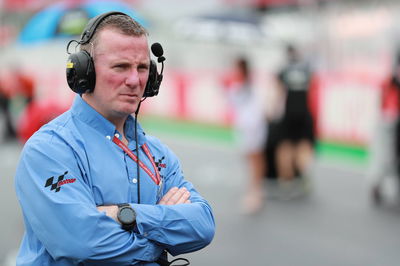
Jarvis believes more precisely defined rules would ease the 'burden' on FIM Technical Director Danny Aldridge's (pictured) shoulders
He also said, “The rules are actually written by the MSMA – the manufacturers. Every single word in there has to be approved by them.” Does the MSMA, therefore, need to be more efficient in agreeing on and approving such matters?
Jarvis countered, “At the end of the day the rules are written by the FIM. Whilst a rule or a principle or a decision may be made, it nevertheless needs to be defined very precisely, and executed and controlled in a very consistent way – the same as any law in any land for any subject whatsoever.
“I would say the main requirement is to have much better and clearer definitions. Could the MSMA definitely be part of that process? Absolutely. The FIM, Dorna,the MSMA, we all have to come together and increase the professionalism of that process. That’s for sure.”
Does he feel that includes the policing of any aerodynamic developments that may arrive in the coming months?
“Danny’s in a difficult situation because he’s alone,” said Jarvis. “The way the protocol is written at the moment, he has the sole authority to decide. That means all that load and burden and pressure is on his shoulders. That’s a pretty heavy load to carry when you’ve got four manufacturers protesting against another about a technicality in the rules.
“If the rules were extremely precisely defined, it would be easier to stand firm. But when there are some guidelines that are ambiguous… I don’t want to criticise any one single person in this affair. I don’t want to enter into that discussion. I just want to take out of it that we can all do things better.”
‘Seven-eight degrees [of difference is] quite significant’
In somewhat farcical circumstances, Honda’s plans for a similar device was approved on the Friday of the Argentine Grand Prix. Reigning world champion Marc Marquez then showcased the component on Friday in Texas, while Aprilia tested a similar part at a private test on the day that followed the race.
And Jarvis said this is a line of development Yamaha will explore. “We’ll certainly look at it without doubt,” he said. “One of the evidences coming out of the case is that it should cool the rear tyre by seven-eight degrees, according to Gigi’s data. That’s quite significant.
“We were the first ones to think if we put something there we might be able to keep some of the spray or water away from the tyre in the wet race. Gigi has stated that the thought to do something came first from seeing the Yamaha.
“If now this is legal to do that and to create an aid to maintain tyre life, of course we have to look at it.”
